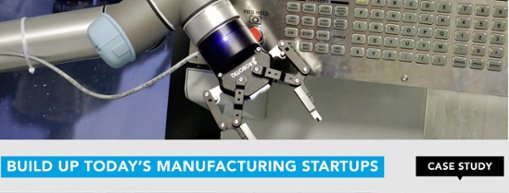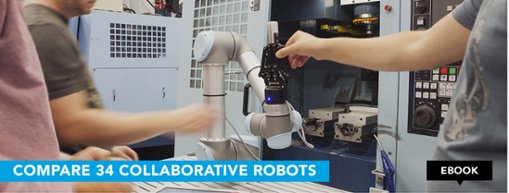Five Ways Unilever Uses Robots to Keep Up

How can robots help consumer product manufacturers? Five examples from Unilever show how robots can help to provide product variety, measure marketing engagement and even reach new markets.
Robots and automation are helping all kinds of businesses to keep up with the demands of consumers, from the smallest manufacturer to the largest multinationals. Unilever and other giants of the consumer goods industry have started to reinvent themselves, with robots and automation at the core of their new business strategies.
As we discussed in a previous article, consumer goods is a changing industry. People demand different things from their consumer products than they did in the past: more variety, more engagement and more control. It is up to manufacturers to respond to these demands.
In this article, we look at five ways that Unilever, the 3rd largest consumer goods company, is using robots to meet changing consumer demands.
JPG.jpg)
1. Robots to Boost Product Variety
In the past, Unilever and other manufacturers specialized in producing millions of the same product. These days, consumers want more variety even for mass produced goods. Manufacturing lines need to handle different sizes, shapes and forms of products. Processes must also be able to quickly change, to incorporate limited edition products and marketing promotions.
Packaging is one stage where versatility is highly beneficial. Robots can reduce the need for multiple packaging lines by using the same robot to handle various products without redesigning the packaging cell. In an article for Packaging World, Unilever's product engineer Torsten Ruetze explained how they incorporated four delta-style robots into the packaging room in their plant in Ansbach, Germany. The robots allow them to easily handle multiple product sizes as they can switch the cell programming in only three minutes.
The robot cell has an added benefit: its vision system can be used for product inspection. The system measures every product to ensure that it meets quality parameters. This provides Unilever with statistics on defect products and the robots can easily remove the non conformities.
2. Robots to Combine Different Product Lines
Palletizing is another area of packaging where robots can introduce huge advantages. Loading pallets is a boring and repetitive job. Automatic palletizing machines have been available for many years, but they are often restricted to handling only one product at a time. Robot palletizing allows for the benefits of traditional palletizers with the versatility of a robot.
Unilever Bestfoods was looking for a way to consolidate the palletizing of their packs of cook-in sauces. They had three production lines feeding into one palletizing room. The process would traditionally require three separate palletizers. But, they were able to introduce one robot to handle the three lines concurrently, placing products onto three separate pallets as they arrive. They were able to use a spare robot that had been sitting in storage, so the investment was minimal.
3. Robots to Measure Marketing Engagement
One of the big changes in the consumer goods industry is that people are starting to expect higher levels of engagement from producers. We usually only see robots on the manufacturing side of consumer goods, but Unilever even has one application which uses robots in marketing.
Stan Sthanunathan, Unilever's senior VP-consumer and market insights officer, explained the application at a conference in 2015. They proposed to use an Aldebaran Nao to measure the engagement of consumers by recognizing their facial expressions while they looked at marketing. He proposed that the application could be used to solve one of the industry's marketing challenges: measuring how people are responding to marketing messages.
This Nao application seems unlikely to be adopted on a wider scale. However, we could certainly start to see robots incorporated into advertising and marketing of consumer goods in the not-too-distant future.

4. Robots to Push the Boundaries of Innovation
Consumer goods companies must continually reinvent themselves to keep up with the changing industry, no matter how big a company they are. Unilever showed its commitment to innovation in 2014 when it opened a research center in Liverpool Science Park. The Integrated High Throughput Formulation Center is devoted to researching the company's home and personal care products.
Robots are a vital technology within the center. Unilever uses robotic automation and data management technologies to speed up the research process, allowing them to easy collaborate with academia and other companies.
5. Collaborative Robots to Reach New Markets
Reaching new markets is a challenge for any company. Emerging markets, like those in Africa, Asia and Pacific, could be the key to growth in the consumer industry. However, they present unique hurdles for established producers like Unilever. The needs of consumers in developing countries are very different to those in more established markets.
Unilever's subsidiary Hindustan Lever Ltd, aims to target poorer consumers in India. As a 2001 article from the Fast Company explained, this requires a completely different approach to marketing, approaching customers at the grassroots level (e.g. by selling on street corners) rather than through established distribution networks.
Hindustan Unilever recently started to use collaborative robots to help them meet the needs of this burgeoning market. This was made possible when Universal Robots set their sights on the Indian market early last year. UR aims to give the country's manufacturers the flexibility of cobots to boost domestic manufacturing. Uptake of collaborative robots had previously been low, explained UR's general manager in India, Pradeep David, in an interview with The Economic Times. However, the country's "Make in India" program — which aims to encourage domestic manufacturing — led to a strong demand for cobots from manufacturing industries.
The consumer goods industry seems likely to continue changing. Companies like Unilever are showing how robots can help to meet the increased demands of modern consumers. Their examples demonstrate the diverse applications which can help manufacturers of all sizes to keep up with changing demands.
How could you use these applications in your business? What changes are you seeing in consumer demands? Which robotic technology would be most suited to your needs? Tell us in the comments below or join the discussion on LinkedIn, Twitter, Facebook or the DoF professional robotics community.






Leave a comment